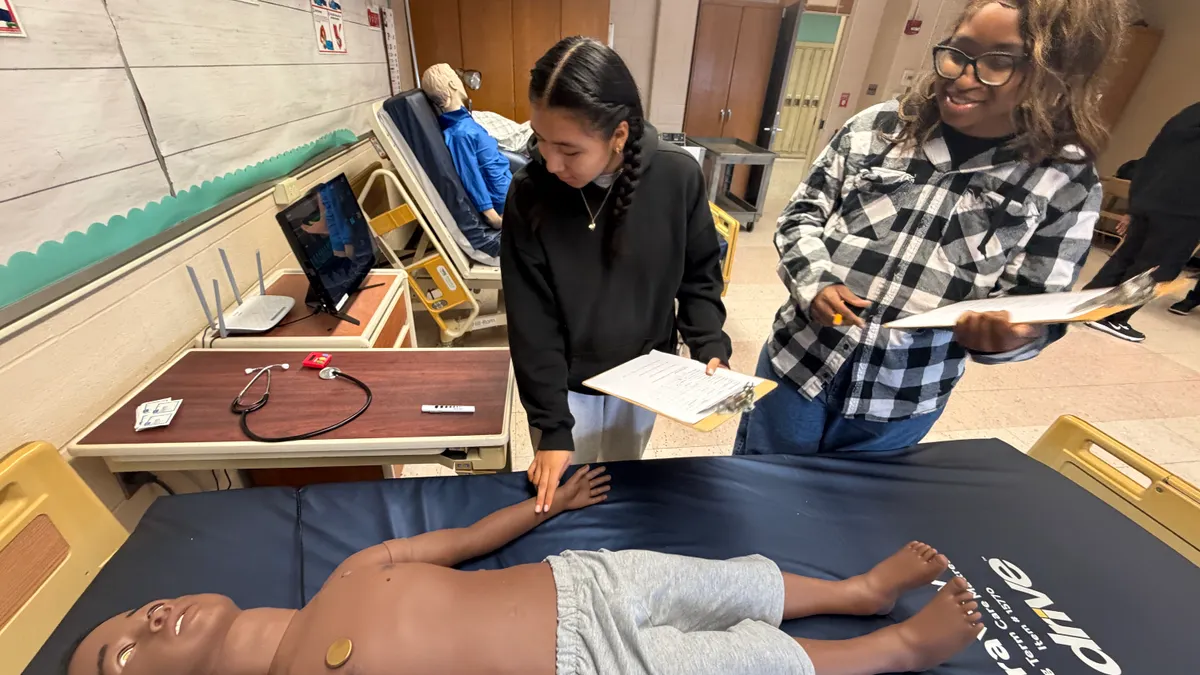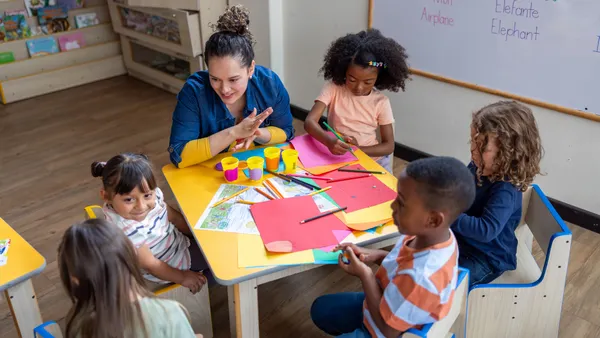Since last year, the Digital Resource Center (DRC), an online site that is part of the Center for News Literacy at Stony Brook University in New York, has seen a 300% increase in visitors. Registered users have doubled.
At the News Literacy Project in Chicago, leaders launched a series of online professional development workshops to meet the demand for training, social media followers doubled and the number of media mentions “skyrocketed” from a few to 30 just in January, according to Erika Hobbs, the organization’s communications director.
Those are just a few examples of the swell in educators’ requests for resources on how to help their students critically evaluate the daily onslaught of media messages in their lives as well as the public’s interest in whether schools are teaching the skills. Last year’s presidential election, and the fake articles masquerading as real, campaign-related news, created a new sense of urgency around information and news literacy.
“The growth and success of organizations such as the News Literacy Project point to the fact that there is a perceived crisis among educators about the impact of ‘fake news’ and media use generally, but on ‘the youth’ especially,” says Natasha Casey, an associate professor of communications at Blackburn College in Carlinville, IL.
Her weekly Google news alert on media literacy also provides evidence of how interest in the field as grown. “The number of articles, programs and events in this digest has increased exponentially,” she says, adding that the high-profile nature of the term “fake news” has helped to “create an entry point for many people who'd never heard of media, information or news literacy before.”
Recent survey research has further strengthened the argument that young people’s digital and media literacy skills are lacking, even though they primarily consume news and information from online information sources, including social media.
Last year, the educational technology company MindEdge surveyed over 1,000 millennials about their critical thinking skills. Only 35% of the respondents said that they were confident in their ability to pick out false information online, and 37% admitted that they had inadvertently shared a story, a tweet or some other piece of information online that ended up being false.
Researchers at the Stanford History Education Group also delved into students’ digital literacy skills last year and concluded that students, despite their social media savvy, often can’t discern the difference between advertisements, sponsored content and genuine news articles.
“Our ‘digital natives’ may be able to flit between Facebook and Twitter while simultaneously uploading a selfie to Instagram and texting a friend,” the researchers wrote. “But when it comes to evaluating information that flows through social media channels, they are easily duped.”
Project Look Sharp, based at Ithaca College in New York, and News-Decoder, part of the Paris-based nonprofit Nouvelles-Découvertes, or “new discoveries,” are also examples of efforts to meet the growing demand for lesson plans and for services that help students understand the news and the news business.
Professional learning opportunities on the rise
In addition to schools’ efforts to integrate news and media literacy into the curriculum, experts say they also see expanding professional learning opportunities for teachers and librarians, both in the U.S. and internationally.
Michael Spikes, the technical director of the DRC, has given 23 workshops this year and is working closely with administrators in a few school districts that want to integrate news literacy more deeply into the social studies instruction., he says.
Conferences and conference sessions organized by the National Association for Media Literacy Education and by University of Rhode Island Professor Renee Hobbs are “definitely gaining momentum,” Casey says. UNESCO’s Global Alliance for Partnerships on Media and Information Literacy and a global news literacy conference held at Stony Brook University in August, in which speakers from several countries addressed issues such as news literacy assessment and adapting instruction for specific audiences, suggest that education leaders in the U.S. aren’t the only ones who feel that these skills are essential.
Legislating news and information literacy
Others are taking a legislative approach to increasing opportunities for students to learn and practice news and media literacy skills. Washington Gov. Jay Inslee signed a bill this year that directs schools to create a policy showing how they will implement media literacy instruction in schools. The law also calls for a survey to learn how educators are already teaching news and media literacy.
A similar bill was introduced in California and passed the state Senate. According to the legislation, the state’s Instructional Quality Commission would develop a model curriculum and the state education agency would create a list of resources and materials for teachers. Another organization, Media Literacy Now, has been working with Common Sense Kids Action to craft model legislation, inspired by the Washington law, to make it easier for other states to adopt the same approach.
As school and district leaders seek to comply with such expectations, however, experts warn that educators should be wary of quick fixes. Relying on fact-checking sites such as Snopes and PolitiFact should not be the only strategy students use to evaluate what they’re reading or watching.
“Just thinking about my own daily scrolling habits, there is no way I could realistically fact check everything I read and see,” Casey says. “However, what I can do on daily basis is bring the critical thinking skills and knowledge I learned via media and information literacy to my consumption habits and as a result, not just blindly accept everything I read and see.”
Spikes also notes a recent study by Yale University researchers, which shows that tagging Facebook posts as fake “isn't helping users to find the differences between good and bunk information.” He added that “one-off solutions” such as tip sheets or even game-based lessons are inadequate. “We have to keep … involving ourselves in active evaluation of the information we see all the time in order to really change behavior.”
Casey adds that while the current interest might represent “a turning point for media and information literacy,” educators need to move beyond the obsession with “fake news” and look at the bigger picture.
“We live and work in a continually evolving media technology landscape where information overload can be overwhelming,” she says. “Media and information literacy provide the skills, knowledge and critical thinking approaches needed to deal with this reality.”

















